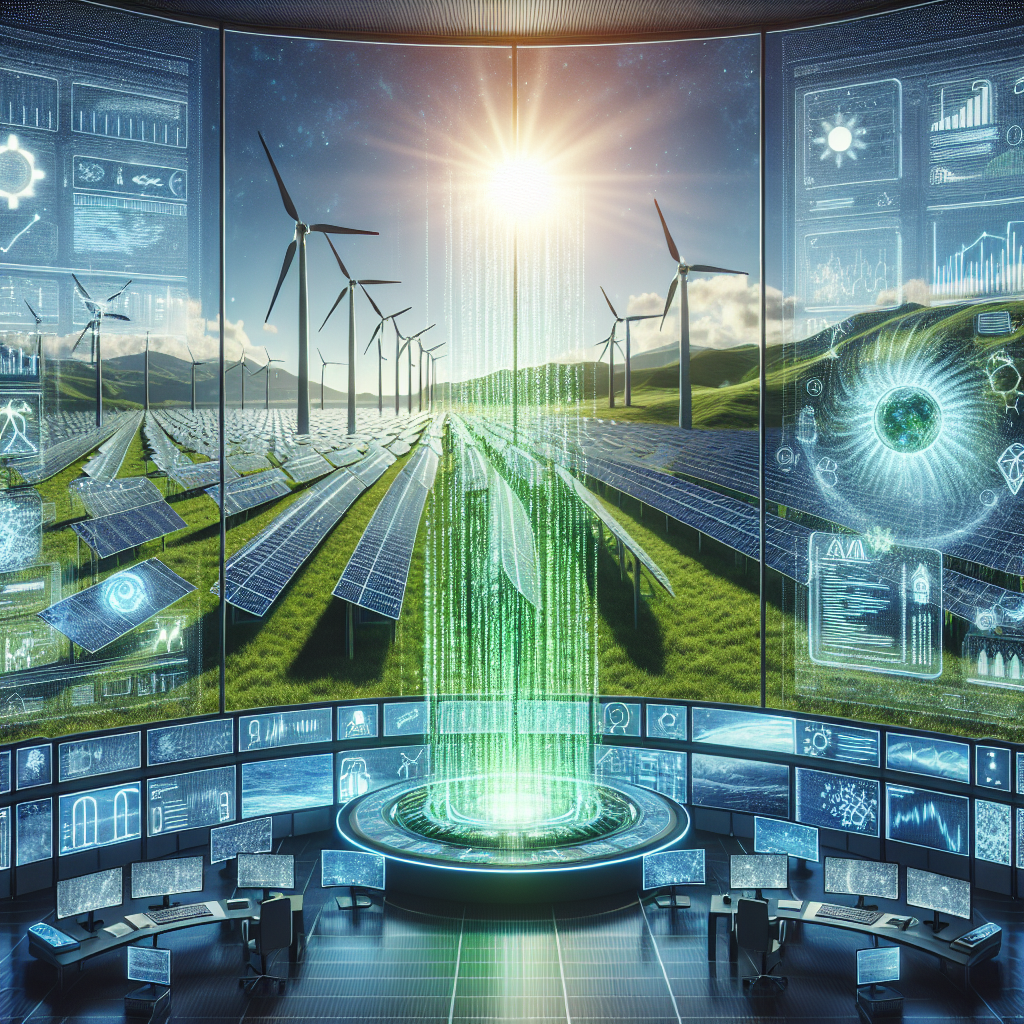Enhancing Renewable Energy Storage with AI Technology
Introduction
Renewable energy sources such as wind, solar, and hydro power have become increasingly popular in recent years as a means of reducing carbon emissions and combating climate change. However, one of the biggest challenges facing the widespread adoption of renewable energy is the issue of energy storage. Unlike traditional fossil fuels, renewable energy sources are intermittent and unpredictable, making it difficult to store excess energy for times when demand is high.
Fortunately, advancements in artificial intelligence (AI) technology are offering new solutions to this problem. By harnessing the power of AI, renewable energy storage systems can become more efficient, reliable, and cost-effective. In this article, we will explore how AI technology is being used to enhance renewable energy storage and address some common questions about this exciting development.
How AI is Improving Renewable Energy Storage
AI technology is revolutionizing the way we store renewable energy by optimizing storage systems, predicting energy production, and improving overall efficiency. Here are some key ways in which AI is enhancing renewable energy storage:
1. Predictive Analytics: AI algorithms can analyze historical data on energy production and consumption to predict future energy needs. By forecasting energy demand and production, renewable energy storage systems can be optimized to store excess energy during times of low demand and release it when demand is high.
2. Energy Management: AI technology can optimize the operation of energy storage systems by continuously monitoring energy production and consumption in real-time. By adjusting storage levels and energy flow rates, AI can ensure that renewable energy is stored and distributed efficiently.
3. Grid Integration: AI can help integrate renewable energy storage systems with the existing power grid, allowing for seamless communication between different energy sources and storage devices. This can help balance supply and demand, reduce grid congestion, and improve overall grid reliability.
4. Maintenance and Diagnostics: AI can also be used to monitor the health and performance of renewable energy storage systems, detecting potential issues before they become serious problems. By conducting predictive maintenance and diagnostics, AI can help prevent costly breakdowns and downtime.
5. Energy Trading: AI technology can enable renewable energy storage systems to participate in energy markets and optimize energy trading strategies. By leveraging real-time market data and price signals, AI can help storage systems buy and sell energy at the most opportune times.
Benefits of AI-Enhanced Renewable Energy Storage
The integration of AI technology into renewable energy storage systems offers a wide range of benefits, including:
1. Increased Efficiency: AI algorithms can optimize energy storage systems to maximize efficiency and minimize waste. By dynamically adjusting storage levels and energy flow rates, AI can ensure that renewable energy is used effectively.
2. Cost Savings: AI technology can help reduce operating costs by optimizing energy storage systems and improving overall system performance. By predicting energy demand and production, AI can help avoid costly peak demand charges and reduce energy waste.
3. Improved Reliability: AI-enhanced renewable energy storage systems are more reliable and resilient, with the ability to adapt to changing energy conditions and demands. By conducting real-time diagnostics and maintenance, AI can help prevent system failures and downtime.
4. Environmental Benefits: By increasing the efficiency and reliability of renewable energy storage systems, AI technology can help reduce greenhouse gas emissions and combat climate change. By enabling the widespread adoption of renewable energy sources, AI can help create a more sustainable energy future.
FAQs
Q: How does AI technology predict energy demand and production?
A: AI algorithms analyze historical data on energy production and consumption to forecast future energy needs. By identifying patterns and trends in energy usage, AI can predict when energy demand will be high and adjust storage levels accordingly.
Q: How can AI optimize energy storage systems?
A: AI technology can optimize energy storage systems by continuously monitoring energy production and consumption in real-time. By adjusting storage levels and energy flow rates, AI can ensure that renewable energy is stored and distributed efficiently.
Q: How does AI help integrate renewable energy storage systems with the power grid?
A: AI technology can help integrate renewable energy storage systems with the power grid by enabling seamless communication between different energy sources and storage devices. By balancing supply and demand, AI can improve grid reliability and reduce congestion.
Q: Can AI technology reduce operating costs for renewable energy storage systems?
A: Yes, AI technology can help reduce operating costs by optimizing energy storage systems and improving overall system performance. By predicting energy demand and production, AI can help avoid costly peak demand charges and reduce energy waste.
Q: What are the environmental benefits of AI-enhanced renewable energy storage?
A: By increasing the efficiency and reliability of renewable energy storage systems, AI technology can help reduce greenhouse gas emissions and combat climate change. By enabling the widespread adoption of renewable energy sources, AI can help create a more sustainable energy future.
Conclusion
AI technology is transforming the way we store renewable energy by optimizing storage systems, predicting energy production, and improving overall efficiency. By harnessing the power of AI, renewable energy storage systems can become more reliable, cost-effective, and environmentally friendly. With the integration of AI technology, the future of renewable energy storage looks brighter than ever.

